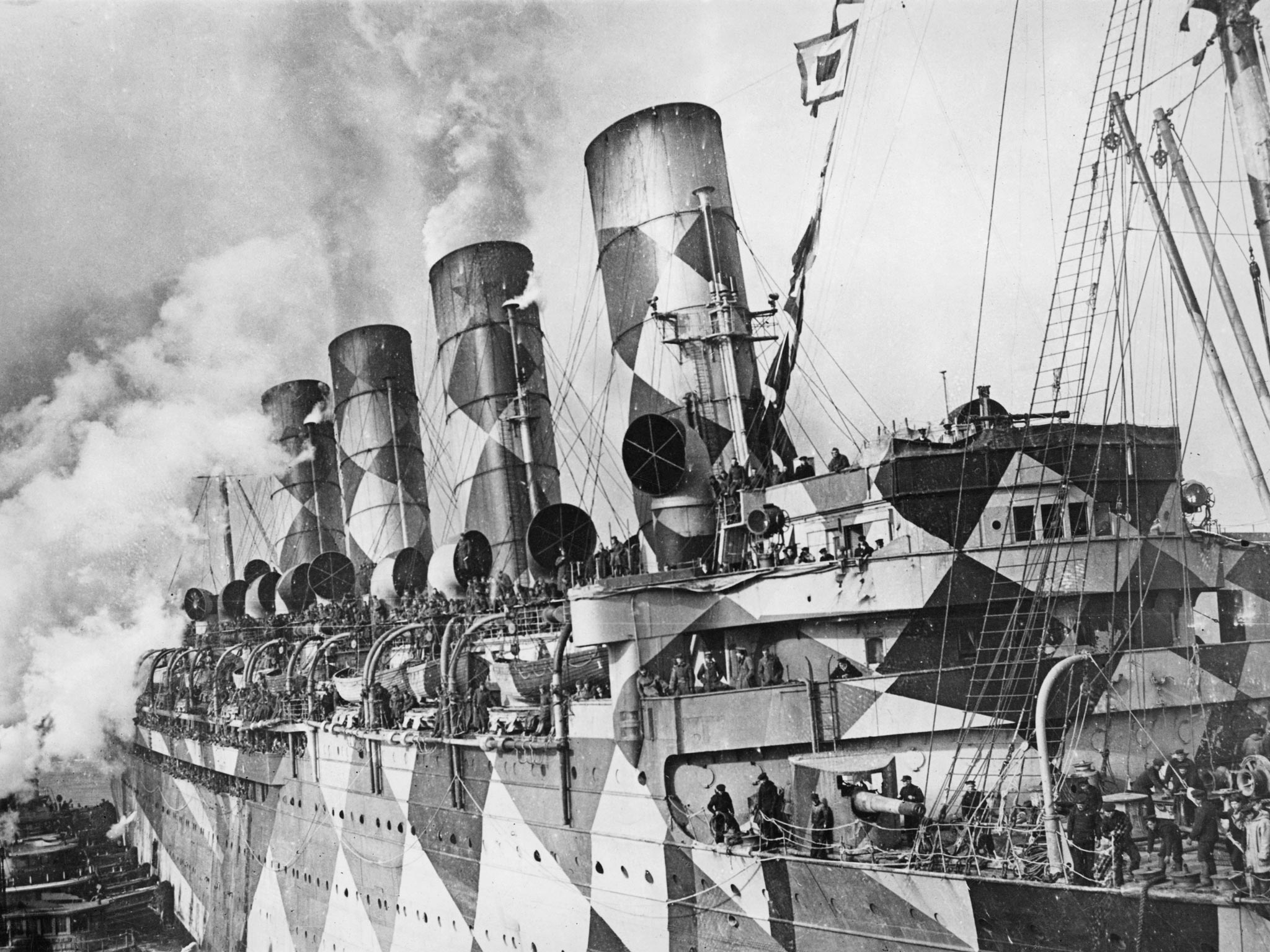'Dazzle' ships and candlelight vigils: First commemorative WW1 art commissions announced
Artists to paint First World War ship as part of centenary events

A surviving First World War ship is to be repainted in its original “dazzle” colours – a little-known technique where the admiralty called on artists to disguise its warships - as part of the four-year cultural programme commemorating the conflict.
The first 26 cultural commissions in the 14-18 Now programme were announced yesterday by the director Jenny Waldman with projects ranging from music and art commissions to theatre and literary events.
Those involved range from cartoonist Ralph Steadman to Turner Prize nominee Anya Gallaccio, as well as novelist Jeanette Winterson, the Ballet Boyz and broadcaster Stephen Fry.
Ms Waldman said the committee had commissioned artists to “respond to the events of the First World War and the wider social political, cultural and scientific developments of the period”.
She said that “one of the most exciting discoveries about artists in the First World War for me was the dazzle ships” adding: “One of the aims of this programme is to discover new things.”
Two ships will be painted by contemporary artists in the “dazzle” camouflage style, a scheme to disguise Britain’s ships which was introduced in 1917.
The use of dazzle, which was not meant to hide the vessels but distort their appearance making it hard for enemies to estimate its direction, size and speed, carried on until the Second World War.
HMS President, an original dazzle ship used during the Great War, which is permanently moored in the City of London, will be returned to its former glories by a contemporary artist from the Chelsea College of Art and Design.
Separately, artist Carlos Cruz-Diez has been commissioned to dazzle the Edmund Gardner, a pilot ship in dry dock near Liverpool’s Albert Dock.
Maria Miller, theSecretary of State for Culture, Media and Sport, was at the launch on board HMS President yesterday and said: “The First World War had such a great deal of culture associated with it from the poets to visual artists, so it wasn’t difficult to see how such a programme would be appropriate.”
She continued: “We would not be commemorating the First World War without a cultural aspect and the programme announced today shows we can do it in a way to bring it to so many more people.”
The centenary of the moment Britain declared war on August 4 1914 will be marked by a large-scale project dubbed “Lights Out”.
Referencing foreign secretary Sir Edward Grey’s statement: “The lamps are going out all over Europe. We shall not see them again in our lifetime,” people across Britain will be invited to turn off their lights except for a single candle. At the same time, the event will be marked with a candle-light vigil at Westminster Abbey.
The BBC is to programme a Late Night Prom with new work that night, which will link to the Lights Out project and which Ms Miller picked out as something she was looking forward to.
The 2014 projects also include Letter to an unknown soldier, which was described by organisers as a “new kind of war memorial”.
Inspired by the statue of a soldier reading a letter in Paddington station, people across the UK are invited to write the letter in his hands. Among those who have already contributed are poet Sir Andrew Motion and Stephen Fry.
The organisers plan to give a glimpse into life and death in the trenches on the Western Front with a production of Owen Sheers’ poem Mametz Wood in the ancient woodland near Usk in Monmouthshire.
The poem recalls the Battle of the Somme, sometimes referred to as the “poets’ battle” as among those who took part were Robert Graves, Siegfried Sassoon and David Jones.
The season includes early Charlie Chaplin films. During the war, his films were projected onto the ceilings of hospitals for injured soldiers to watch. This will be recreated in the Cinema Museum in London near where Chaplin was born, with audiences watching the films from hospital beds in a recreated field hospital.
Dazzle ships
The British Admiralty introduced dazzle painting to camouflage its ships in early 1917, at a time when German submarines threatened Britain’s trade and supplies.
They brought in painters from the “Vorticist” school, an abstract art movement partly inspired by Cubism. These artists painted lines and curves of contrasting colours to break up the shape.
Rather than hide the ships, the contrasting lines and colours were designed to distort the appearance so enemies could not calculate the course they were travelling or know from which angle to attack.
Dazzle was invented by Norman Wilkinson, a marine painter who would go on to become president of the Royal Institute of Painters in Watercolours.
The painting of 2,000 ships, all different designs, was overseen by artist Edward Wadsworth. Many of the designs were created by women from the Royal Academy of Arts, which were then tested on wooden models in a studio through a periscope.
The admiralty never scientifically proved how effective dazzle was during the First World War but a recent study suggested it could be used on modern battlefields.
Subscribe to Independent Premium to bookmark this article
Want to bookmark your favourite articles and stories to read or reference later? Start your Independent Premium subscription today.

Join our commenting forum
Join thought-provoking conversations, follow other Independent readers and see their replies